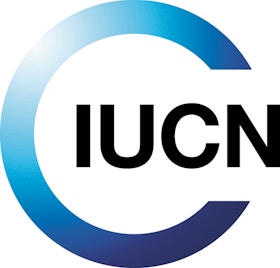More than 100 conservation and development practitioners attended the Critical Ecosystem Partnership Fund (CEPF) Phase II Final Assessment Workshop, held from 28 to 30 May in Siem Reap, Cambodia. Participants seized the opportunity to reflect on progress and achievements made in conservation efforts supported by CEPF in the Indo-Burma Biodiversity Hotspot. Workshop participants also explored major conservation issues still facing the region, and assessed progress since 2013 towards CEPF’s long-term conservation goals.
“In the past six years, CEPF has awarded more than 180 grants worth over US$ 15 million to conservation initiatives in Cambodia, Lao PDR, Thailand, Viet Nam and parts of Southern China. CEPF investments have generated impacts and produced results that have contributed to several countries’ biodiversity conservation goals and policies,” said Mr. Ouk Vibol, Director of the Department of Fisheries Conservation, Ministry of Environment, Cambodia, in his opening speech.
Through financial support and organisational strengthening, CEPF empowers civil society organisations in the world’s biodiversity hotspots to deliver innovative, enduring solutions that conserve biodiversity and help communities thrive. CEPF is a joint initiative of l’Agence Française de Développement, Conservation International (IUCN Member), the European Union, the Global Environment Facility, the Government of Japan (IUCN State Member) and the World Bank.
Since 2013, CEPF’s grantees in the Indo-Burma Biodiversity Hotspot have successfully developed long-term conservation programmes for 32 species that were identified as high priority for the region, including the Tonkin Snub-nosed Monkey, the Irrawaddy dolphin, and the Indo-Chinese hog deer, among others, and developed several initiatives to reduce cross-border wildlife trafficking piloted by enforcement agencies in collaboration with a variety of stakeholders.
CEPF-funded projects have also engaged 17 private sector companies in the promotion and adoption of voluntary restrictions on international transportation, sale and consumption of wildlife; and analysed and proposed 11 mitigation policies, plans and programmes.
At the workshop, more than half of CEPF’s 108 grantees in the region presented their projects, specifically highlighting successes and lessons learnt.
“This workshop gives us the opportunity to learn about the impact of your work and hear your stories. We will bring your stories back to our donors and make a compelling case for reinvestment in the Indo-Burma region,” said CEPF Executive Director Olivier Langrand in his speech to the civil society organisations and other grantees in attendance.
In-depth discussions at the workshop revealed that progress towards CEPF’s long-term conservation goals were particularly strong with regard to sustainable financing and weaker in the areas of responsiveness to emerging issues. Threats that ranked the highest in the region include industrial agriculture; poaching, trade and consumption of wildlife; and large infrastructure.
“Our work is far from over and there is still a long distance to travel if we are to achieve CEPF’s Long-Term Vision for Indo-Burma. The pressures and threats on the hotspot continue to grow, while the need for conservation funding has never been greater. We have seen this in our call for proposals, where the number of applications we receive has consistently been far greater than the number we could support,” said Scott Perkin, Head of the Natural Resources Group at IUCN Asia, which is leading the second phase of CEPF’s work in the Indo-Burma hotspot.
The Indo-Burma Hotspot is ranked in the top 10 hotspots for irreplaceability and in the top five for threat, with only 5 per cent of its natural habitat remaining and with more people than any other hotspot, according to the CEPF 2011 ecosystem profile. At over 2 million square kilometres, it also covers more land area than any other hotspot, and includes all non-marine parts of Cambodia, Lao PDR, Myanmar, Thailand and Viet Nam, plus parts of Bangladesh, southern China (including Hainan Island, southern parts of Yunnan, Guangxi and Guangdong Provinces, Hong Kong and Macau) and Malaysia.
Since 2013, CEPF has directly supported 108 civil society organisations in the Indo-Burma hotspot, 84 of which are local. More than 76 per cent of the 108 civil society organisations have demonstrated an increased capacity in tacking biodiversity conservation issues in the region.
For more information, please contact:
Ann Moey, Head of Communications, IUCN Asia Regional Office; t: +66 2 6624029,
e: ann.moey@iucn.org
About International Union for Conservation of Nature and Natural Resources (IUCN)
IUCN is a membership Union composed of both government and civil society organisations. It harnesses the experience, resources and reach of its more than 1,300 Member organisations and the input of more than 13,000 experts. IUCN is the global authority on the status of the natural world and the measures needed to safeguard it.
Website: www.iucn.org/asia | Facebook: iucn.asia | Twitter: IUCNAsia
About CEPF
Founded in 2000, the Critical Ecosystem Partnership Fund is a global leader in enabling civil society to participate in and benefit from conserving some of the world’s most critical ecosystems by providing grants for organisations to help protect biodiversity hotspots, Earth’s most biologically rich yet threatened areas. CEPF is a joint initiative of l’Agence Française de Développement, Conservation International (IUCN Member), the European Union, the Global Environment Facility, the Government of Japan (IUCN State Member), and the World Bank.
IUCN is leading the second phase of CEPF’s work in the Indo-Burma hotspot, working together with the Myanmar Environment Rehabilitation-conservation Network (MERN) and Kadoorie Farm and Botanic Garden (KFBG) to form the CEPF Regional Implementation Team (RIT).
Website: www.cepf.net | Facebook: CriticalEcosystemPartnershipFund | Twitter: Community_CEPF
Publish your content with EB Publishing
It's about who you reach. Get your news, events, jobs and thought leadership seen by those who matter to you.











